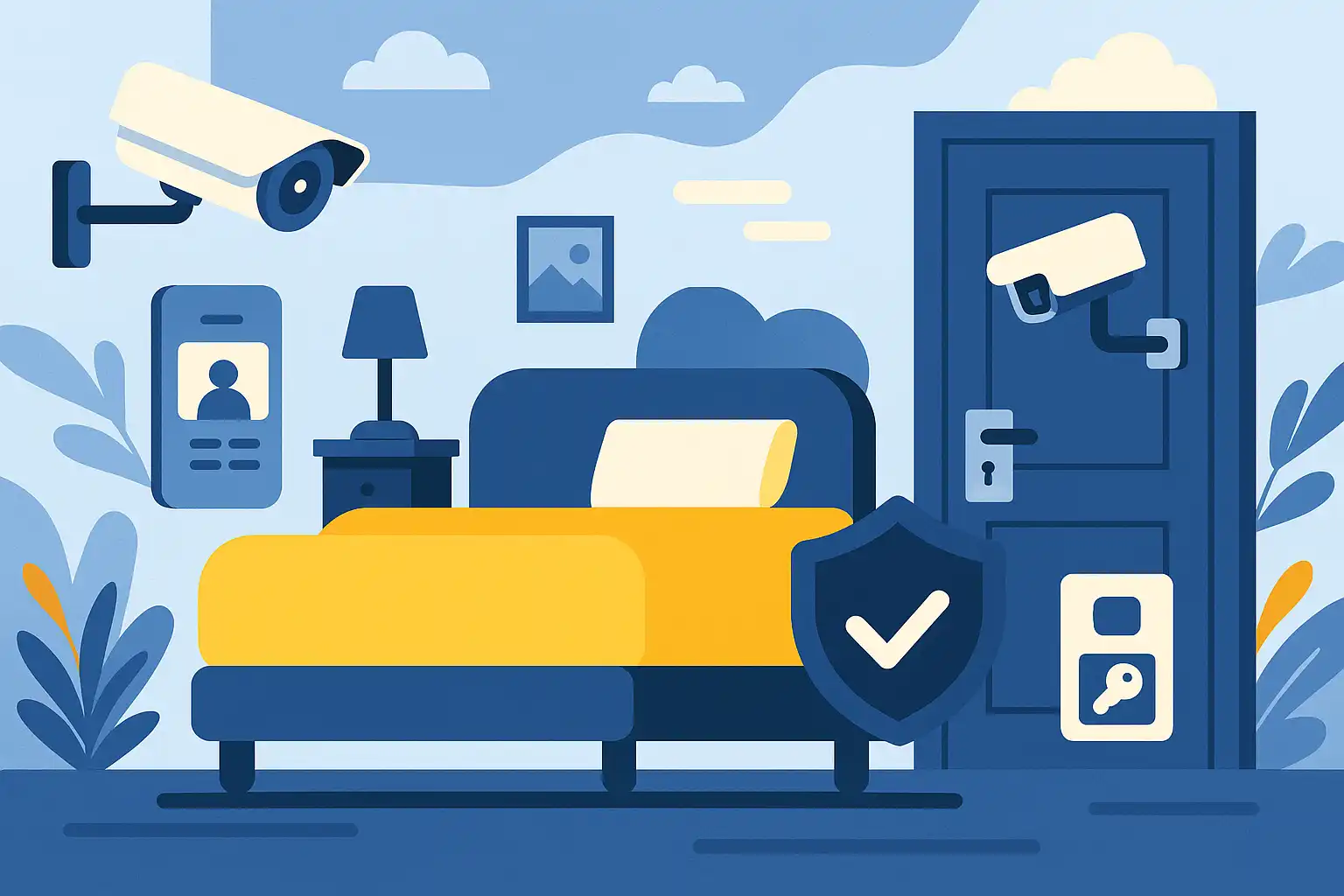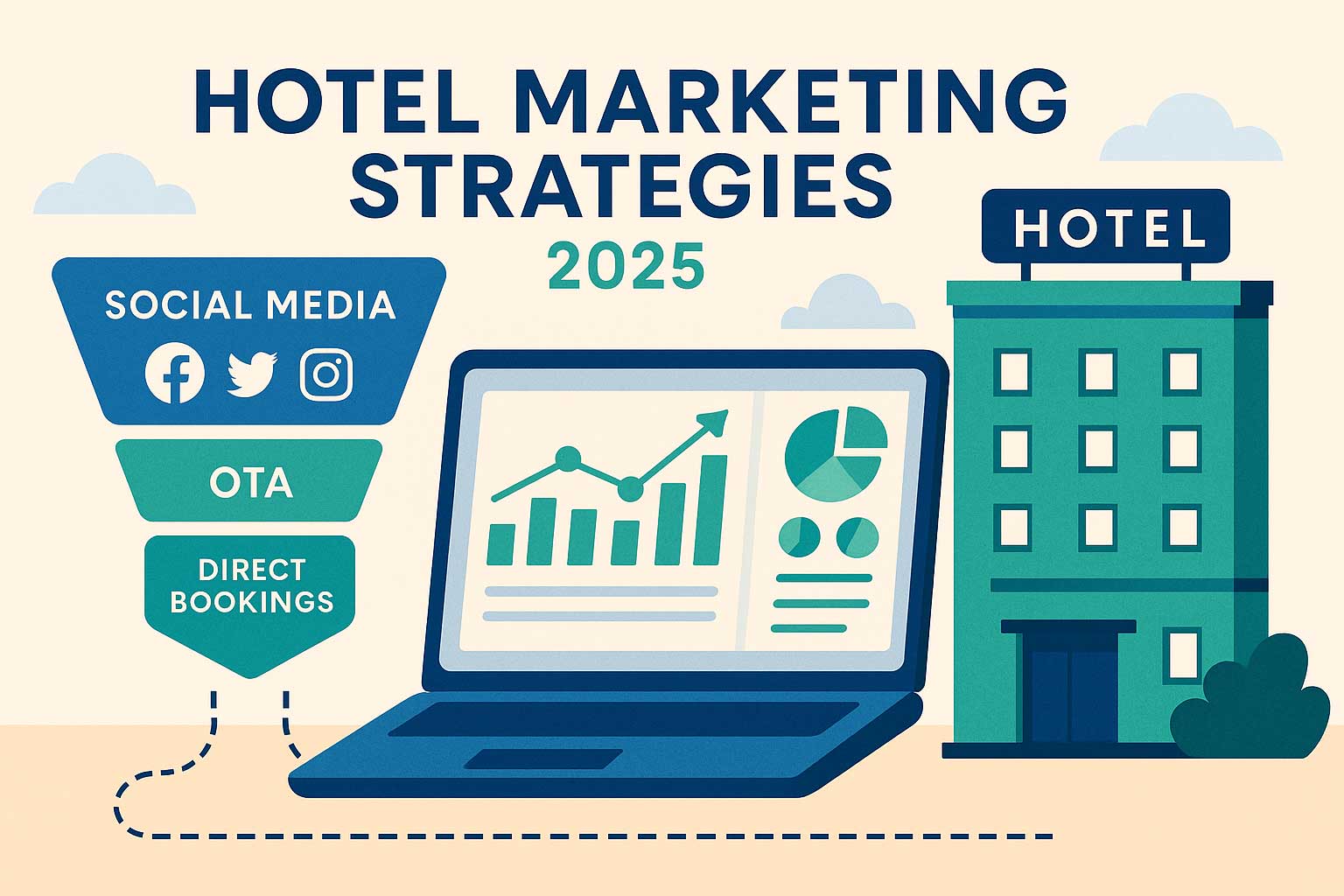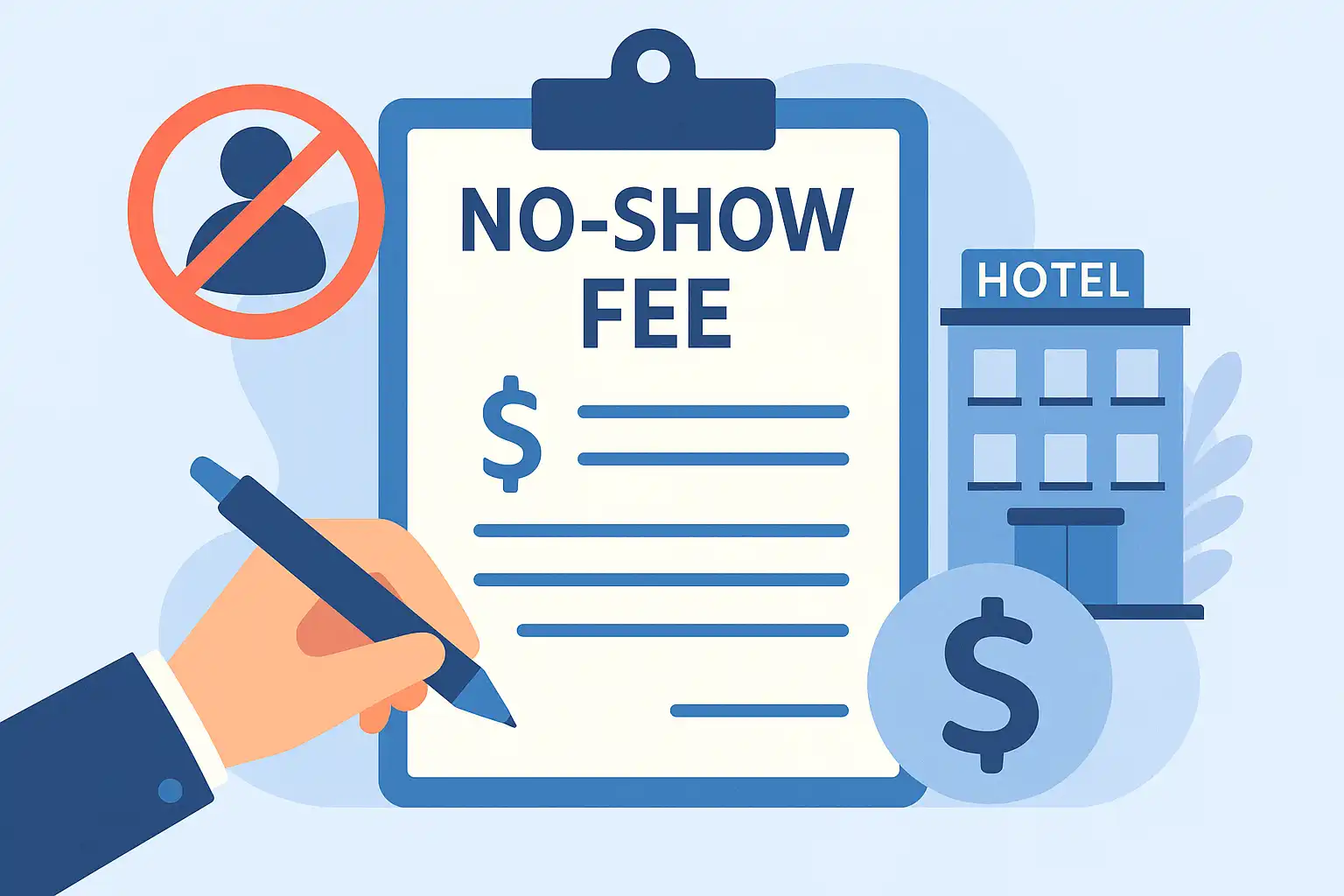Hotel No Show: Prevention and Management Strategies
Sep 19, 2025
 Mika Takahashi
Mika TakahashiPopular Categories
Hotel Technology & InnovationHotel Operations OptimizationDigital MarketingIndustry TrendsRevenue ManagementHospitality Industry
Popular Categories
Trending Post

Hotel Walk Letter Template: Professional Guest Communication

Online Travel Agents: What They Are and How They Work

Hotel Security Systems: Modern Protection Solutions

Hotel Advertising: Complete Guide to Boost Bookings and Revenue

25 Hotel Marketing Strategy Ideas for 2025: Complete Guide

AI Reservation Agent: Revolutionizing Hotel Booking and Guest Experience

PMS Communication: Streamlining Property Management Through Effective Guest Messaging
Table of contents
Every hotel manager knows the frustration of getting a room ready for a guest who never shows up. This all-too-common situation, called a hotel no show, is one of the biggest headaches in the hospitality industry. Even when bookings seem confirmed, no shows can seriously disrupt your hotel’s operations and hit your revenue hard.
Managing and reducing no shows isn’t just about setting policies—it’s about taking a thoughtful, comprehensive approach that balances keeping your guests happy with running your hotel efficiently. In this blog post, we’ll walk you through proven strategies to minimize no shows, protect your hotel revenue, and keep your operations running smoothly, even when guests don’t arrive.
What is a Hotel No-Show?
Simply put, a hotel no show happens when a guest with a confirmed reservation doesn’t show up and doesn’t cancel by the hotel’s check-in deadline, usually around 6 PM on the arrival day. This is quite different from other booking scenarios hotels face regularly.
Key Differences in Guest Behavior
Knowing the difference between guest behaviors helps hotels create better policies:
- No Show: The guest books a room but never arrives and doesn’t cancel.
- Late Cancellation: The guest cancels too close to the arrival date, usually within 24-48 hours.
- Early Departure: The guest checks in but leaves earlier than planned.
Industry Stats You Should Know
No show rates can vary widely depending on the hotel and season. On average, hotels see between 5-15% no show rates. Business hotels in cities often have more no shows during the week, while resorts tend to see peaks during holiday seasons.
Why does this matter? Because no shows can cause 10-40% revenue loss per empty room, especially during busy times when it’s tough to fill those spots.
How No Shows Affect Hotel Operations
No shows don’t just mean lost money. Hotels still have to staff the front desk, clean rooms, and allocate resources based on expected guests. When someone doesn’t arrive, it throws off all those plans, wasting time, money, and impacting the experience for other guests.

Common Reasons Guests Become No Show in Hotel
Understanding why no shows happen helps you fight them better. Here are the main reasons:
Travel Disruptions and Unexpected Events
Around 30% of no shows happen because of things outside anyone’s control, like:
- Flight cancellations or delays caused by weather
- Medical emergencies
- Transportation strikes or other travel issues
- Family emergencies
Guest Booking Habits
Many travelers now book multiple rooms across different sites and cancel the extras later. This “just in case” approach is great for guests but tough on hotels, especially when cancellations don’t happen.
Online travel agencies (OTAs) often encourage this with free cancellations and flexible policies, making guests less committed. Plus, last-minute bookings have become more common, leading to spontaneous plans that sometimes fall through causing no show in hotel.
Last-Minute Changes
Business travelers often cancel or reschedule meetings, leading to last-minute no shows. Personal travel plans can also shift because:
- Guests find better deals elsewhere
- Group travel plans change
- Weather changes at the destination
- Guests discover alternative accommodations
Forgotten Bookings
Sometimes guests just forget about their reservation, especially if they booked months in advance during sales or promotions.
Booking Channel Matters
Where a guest books makes a big difference. OTA bookings have about three times the rate of no show in hotel compared to direct bookings on your hotel’s website. Why? OTA guests often feel less connected to the hotel, and direct bookings usually involve more thoughtful decisions and loyalty incentives.
The Financial Hit from No Shows
No shows cost hotels more than just an empty room. Here’s the full picture:
Lost Revenue
Depending on location and season, hotels can lose $150-$400 per room per night when guests don’t show up. This adds up fast during busy times, especially when you miss out on selling that room to someone else.
Wasted Resources
Even if a guest doesn’t arrive, rooms still need cleaning, which costs $15-$30 per room. If you offer breakfast or other dining options, meals and staff time go to waste too. Plus, staffing is planned around expected guests, so no shows in hotel can mean overstaffing and higher labor costs.
Long-Term Effects
Frequent no show in hotel can make it harder to:
- Forecast demand accurately
- Price rooms effectively
- Plan staff schedules
- Keep guest satisfaction high due to operational hiccups
Knowing these impacts makes it easier to justify investing in strategies that reduce no shows and protect your hotel revenue.
Tried-and-True Prevention Strategies
The best way to handle no shows is to prevent them. Here’s what works:
Deposit and Payment Policies
Asking guests to commit financially can make a big difference:
- Non-refundable Deposits: Require a 50% non-refundable deposit during peak seasons to cut down on no shows.
- Credit Card Guarantees: Take a valid credit card and pre-authorize the first night’s stay to hold guests accountable.
- Prepayment Discounts: Offer 10-15% off for guests who pay in full upfront. This not only reduces no shows but helps cash flow.
- Clear Fee Structures: Be upfront about no show fees, usually the first night’s rate plus taxes, so guests know what to expect.
Smart Cancellation Policies
Balance guest flexibility with protecting your hotel:
- Require cancellations 48-72 hours before arrival during busy times so you can resell rooms.
- Use tiered penalties: free cancellation 48+ hours out, 50% fee 24-48 hours out, full fee for same-day cancellations.
- Communicate policies clearly in confirmations and reminders.
- Allow one penalty-free modification to encourage guests to update plans instead of disappearing.
Keep Guests in the Loop with Reminders
Good communication is key:
- Send automated emails 7 days, 3 days, and 24 hours before check-in with booking details and cancellation info.
- Use SMS or push notifications 48 hours before arrival to reach mobile users.
- Include easy cancellation links to encourage early notice.
- Ask guests to confirm arrival times 24 hours before check-in to help planning.
Be Flexible Where It Counts
Rigid policies can backfire, so:
- Offer flexible terms for certain guest types or low-demand times.
- Tailor policies based on booking channel or guest history.
- Tighten rules during peak periods when no show in hotel hurt most.

How Technology Can Help Manage No Shows
The right tools make prevention easier and more effective:
Property Management Systems (PMS)
Modern PMS can:
- Automate reminders and track engagement.
- Report no show rates by channel, guest type, and season.
- Integrate payment processing for automatic no show fees.
Channel Managers
Keep bookings coordinated across platforms:
- Sync inventory in real-time to avoid overbooking.
- Monitor booking patterns to spot risky reservations.
- Ensure cancellation policies are consistent everywhere.
Revenue Management Software
Use smart forecasting to:
- Calculate safe overbooking levels.
- Adjust pricing based on predicted no show rates.
- Forecast demand more accurately.
Customer Relationship Management (CRM)
Personalize communication to reduce no show in hotel:
- Send targeted messages based on guest behavior.
- Identify guests likely to no show and intervene early.
- Collect feedback to improve prevention efforts.
Mobile Solutions
Since travelers live on their phones:
- Offer mobile check-in to boost engagement.
- Use app push notifications for timely reminders.
- Let guests easily modify or cancel bookings via mobile.
Smart Overbooking Strategies
Overbooking can help offset no show losses if done carefully:
Finding the Right Level
- Analyze your own no show history to set safe overbooking limits, usually between 2-8%.
- Adjust for seasonal demand and booking channels.
- Balance revenue gains with the risk of upsetting guests.
Monitor Demand Patterns
- Business vs. leisure travel affects no show trends.
- Events and conventions can spike demand unpredictably.
- Different guest types behave differently.
Prepare for Walked Guests
Sometimes overbooking means more arrivals than rooms:
- Have partner hotels ready.
- Offer upgrades if possible.
- Provide transportation and compensation when needed.
Track and Improve
- Keep denied accommodation rates low (under 0.5%).
- Measure revenue gained vs. costs of walking guests.
- Monitor guest satisfaction closely.
- Review and adjust strategies regularly.
Boost Direct Bookings to Cut No Shows
Encouraging guests to book directly is one of the best ways to reduce no shows and increase profits:
Make Direct Booking Attractive
- Offer best rate guarantees.
- Provide exclusive perks like free breakfast or upgrades.
- Give more flexible cancellation policies for direct bookers.
Use Loyalty Programs
- Reward direct bookings with points, upgrades, and privileges.
- Penalize frequent cancellations or no shows.
Personalize the Experience
- Customize stays based on direct booking info.
- Keep open communication channels.
- Highlight unique local experiences.
Make Booking Easy and Clear
- Ensure your website works great on mobile.
- Simplify the booking steps.
- Clearly show cancellation policies and contact info.
- Provide instant confirmation with next steps.
Promote Direct Booking Everywhere
- Use email campaigns, social media, and content marketing.
- Optimize your site for search engines.
What to Do When No Shows Happen
Even with all efforts, some no shows are inevitable. Here’s how to handle them well:
Act Fast
- Contact guests within 2 hours of missed check-in by phone and email.
- Use multiple channels to reach them.
- Keep records of all contact attempts.
Recover Revenue
- Release rooms to waitlists or walk-ins by 8 PM.
- Charge no show fees promptly.
- Manage waitlists efficiently to fill empty rooms.
Keep Guests Happy
- Send empathetic follow-ups explaining charges.
- Offer help to rebook with incentives.
- Ask for feedback to improve.
Track Patterns and Enforce Policies
- Update guest profiles with no show history.
- Identify trends and adjust policies.
- Train staff to handle no shows consistently and professionally.
Measure and Improve Your No Show Management
To get better over time, track these key metrics:
- Monthly no show rates by channel and guest type.
- Percentage of lost revenue recovered.
- Booking channel performance.
- Seasonal trends.
Also, monitor guest satisfaction related to policies and cancellation processes. Balance prevention with keeping guests happy.
Review costs and benefits of your strategies regularly. Compare your hotel’s performance with industry standards and competitors. Keep improving policies, technology, and staff training.
Conclusion
Hotel no shows are a tough challenge but managing them well can make a huge difference to your bottom line. By combining clear policies, smart communication, technology, overbooking, and direct booking strategies, you can reduce no shows, boost revenue, and keep operations smooth.
Remember to use data to understand your hotel’s unique patterns, stay flexible, and always keep guest satisfaction front and center. With the right approach, keeping no show rates low and recovering lost revenue is absolutely achievable.
The hospitality industry is always evolving, but hotels that invest in comprehensive no show management will be better positioned for long-term success, protecting revenue and building loyal guests.
Start implementing these strategies today to minimize no shows, maximize your revenue, and create a more predictable, profitable hotel business for tomorrow.
